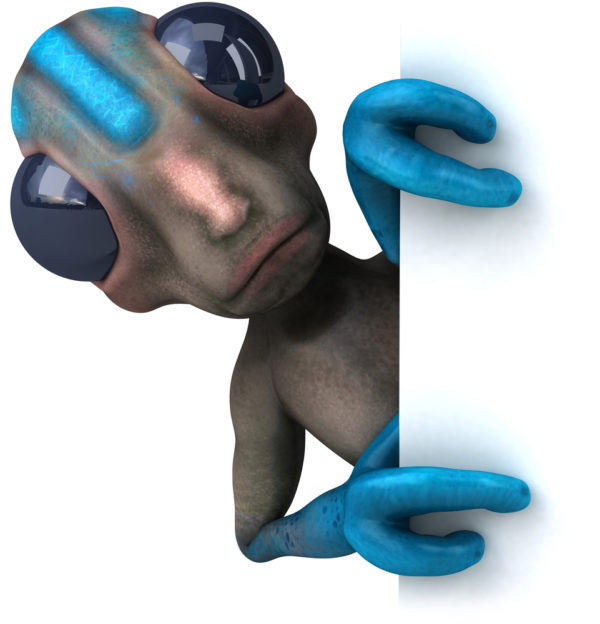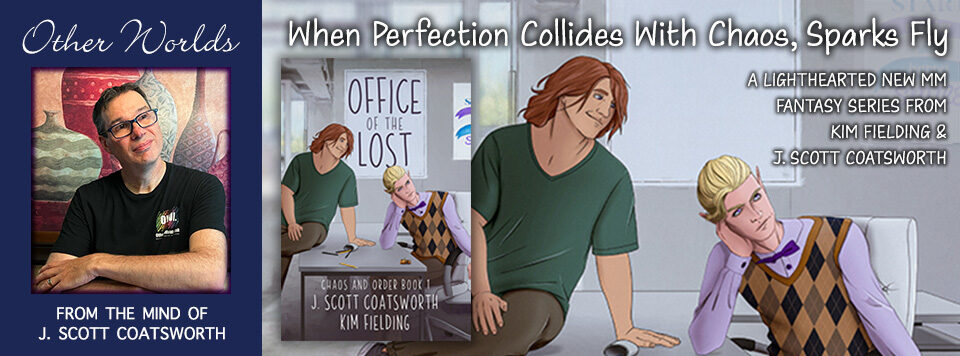
I just finished reading The Bantam by RJ Theodore (review coming soon). I really enjoyed it – it’s like a crash course in writing a relatable alien.
So how did the author do it?
When writing truly alien characters, we have to discard everything we know:
- Why should they be bipedal?
- Why should they have hands or fingers, and why would these appendages be at the end of arms?
- Why would they have two genders?
- Why two eyes? Would they even have something we’d call eyes?
Many sci-fi shows, books and films create aliens that are basically humans with different skin tones, or antennas, or big eyes, or maybe all three. It’s obvious why they do this. Human viewers can relate to these creatures, as strange as they are, because they still bear a basic similarity to us.
The Star Trek universe is a prime example of this. Sure, occasionally they’d run across something different – remember tribbles? But these non-human aliens were often more like pets or unthinking animals. Mostly characters Kirk (or Picard or Riker) could actually sleep with, anatomically speaking.
I’ve been guilty of this too, in some of my own work. The Ithani in the Oberon Cycle are reasonably human-like, even if they do have some decidedly non-human genders and traits.
Which is why I was so fascinated by the characters in The Bantam.
In a nutshell, the book deals with two alien races – the iscillian (commonly called the bantam) and the xendari. We only get a brief description of the xendari as “four-armed vertebrate sentients,” but the bantam are fascinating.
Apparently bred to work with a starship’s systems as caretakers and upgraders, these alien beings have no bones, all the better to allow them to slip into tight spaces where their engineering expertise may be required. They use vacillating skin color to communicate with one another, and can stretch themselves out as needed, like rubber.
So how do you make such a strange non-human creature relatable to the reader? Theodore pulls a few tricks out of her writer bag here.
First off, the name. A “Bantam” is a small breed of chicken, and little bits and pieces of the description reinforce this throughout the book – talking about her beak, her crop where she stores food until she needs it, and other little similar details give us something familiar to tack this strange creature onto. I can almost see her strutting down the halls like a giant, phosphorescent chicken, clucking happily away.
But she also gives Ehli very human wishes and desires. The urge to paint beautiful things. The longing for someone to call “friend.” And the pang of loss when she loses someone close to her. These are universal themes that help bridge the gap between alien characters and readers, in this case to make Ehli memorable and relatable.
Oh and there’s another one. Her official name is LE01 – short for Landor Engineering Oh One. It’s a very dry, mechanical name, but she’s renamed herself Ehli. Self-reinvention – how human is that?
In the end, the trick here is to find truly alien traits to give your character (and then stick with them), while finding your way back to connect with your reader with personality quirks that your readers will find reassuring and familiar. And then create a framework to hang it all on that will help ground the visuals for your oddball alien.
If you do it just right, you’ll create some amazingly unique characters that will delight your readers and set your writing apart from all those run-of-the-mill green men with antennas.
To my writer friends – how do you construct alien characters? What are your own tips and tricks for making them relatable to your readers?
